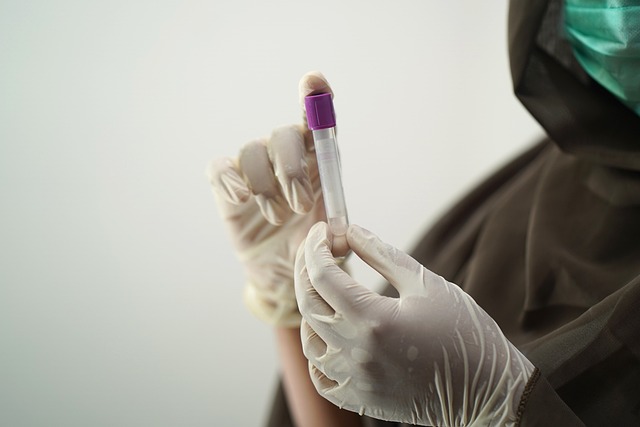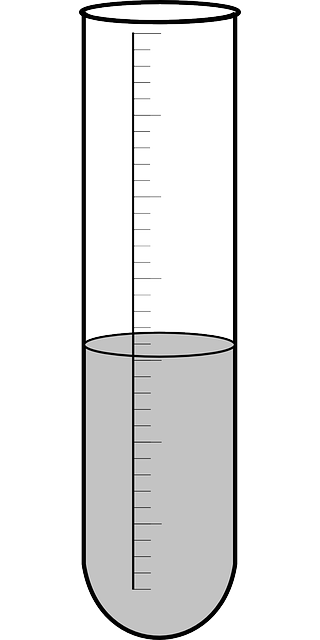The UK Standard Liver Blood Test is essential for accurately diagnosing iron deficiency anemia by assessing iron stores through serum ferritin levels, evaluating hemoglobin for oxygen transport, and analyzing mean corpuscular volume (MCV) and red cell distribution width (RDW) for red blood cell size and variation. This comprehensive test, which also includes liver enzyme measurements like ALT and AST, is crucial for differentiating iron deficiency anemia from other types of anemia and for establishing a standard diagnostic procedure in the UK. It facilitates early detection and intervention, which are vital for health improvement and appropriate care. The results from this test enable healthcare providers to tailor personalized treatment plans, whether through dietary changes, supplementation, or managing underlying conditions, and necessitate regular monitoring to track treatment effectiveness and adjust ongoing management as needed. Consulting with a healthcare provider is essential after receiving test results for an accurate interpretation of your unique health status.
Iron deficiency anemia is a common health concern, with accurate diagnosis being pivotal for effective treatment. This article sheds light on the UK’s standard approach to identifying this condition through the UK Standard Liver Blood Test. We delve into the nuances of this diagnostic tool, exploring how hemoglobin and ferritin levels provide critical insights into your iron status. Understanding the results of this test is essential for timely intervention and management of iron deficiency anemia. Join us as we navigate the complexities of this blood test and empower you with knowledge to take charge of your health.
- Decoding Iron Deficiency Anemia through the UK Standard Liver Blood Test: A Comprehensive Guide
- Understanding the Mechanics of Iron Deficiency Anemia Diagnosis: The Role of Hemoglobin and Ferritin Levels in the UK Standard Liver Blood Test
- Interpreting Your Results: What the UK Standard Liver Blood Test Can Tell You About Iron Deficiency Anemia and Next Steps
Decoding Iron Deficiency Anemia through the UK Standard Liver Blood Test: A Comprehensive Guide

Understanding iron deficiency anemia begins with accurate diagnosis, which is where the UK Standard Liver Blood Test plays a pivotal role. This test measures various parameters, including serum ferritin levels, hemoglobin, mean corpuscular volume (MCV), and red cell distribution width (RDW). Ferritin, a protein that stores iron in the body, is a key indicator of iron stores; low ferritin levels are often indicative of iron deficiency. The hemoglobin test assesses the amount of this oxygen-carrying protein in your blood, which can be reduced in anemia. MCV and RDW provide further insights into the size and variation of red blood cells, aiding in distinguishing between different types of anemia, including iron deficiency anemia.
The UK Standard Liver Blood Test is not exclusively a tool for liver health; it has become a standardized method for diagnosing iron deficiency anemia due to its comprehensive nature and the reliability of its results. It is important for individuals experiencing symptoms such as fatigue, weakness, or paleness to undergo this test, as early detection and intervention can significantly improve health outcomes. Healthcare providers use the results in conjunction with clinical judgment and additional tests when necessary to confirm a diagnosis and guide treatment plans effectively. The test’s standardization across the UK ensures consistency and accuracy, making it an essential diagnostic tool for healthcare professionals managing iron deficiency anemia.
Understanding the Mechanics of Iron Deficiency Anemia Diagnosis: The Role of Hemoglobin and Ferritin Levels in the UK Standard Liver Blood Test

In the UK, the diagnosis of iron deficiency anemia often begins with a routine blood test known as the UK Standard Liver Blood Test. This comprehensive panel includes measurements of hemoglobin and ferritin levels, which are pivotal in assessing iron stores within the body. Hemoglobin, a protein in red blood cells, carries oxygen throughout the body; its levels can indicate anemia if they fall below the normal range. Ferritin, a protein that stores iron in the body, serves as an important indicator of iron reserves. Elevated ferritin levels can suggest adequate iron storage, while low ferritin may point to depleted iron and potentially iron deficiency anemia. The interplay between these two parameters is crucial for a definitive diagnosis. Additionally, the UK Standard Liver Blood Test may include other markers such as serum iron and transferrin saturation, which further elucidate iron metabolism and help differentiate between iron deficiency anemia and other forms of anemia or health conditions. Early detection through these tests is vital for timely intervention and effective management of iron deficiency anemia in the UK population.
Interpreting Your Results: What the UK Standard Liver Blood Test Can Tell You About Iron Deficiency Anemia and Next Steps

The UK Standard Liver Blood Test plays a pivotal role in diagnosing iron deficiency anemia by measuring specific biomarkers related to liver health and iron levels. One of the key components of this test is the assessment of serum ferritin, which is an indicator of body iron stores. A low ferritin level is often associated with iron deficiency anemia, particularly when coupled with a decrease in hemoglobin and hematocrit levels. Additionally, the test includes measurements of liver enzymes such as alanine aminotransferase (ALT) and aspartate aminotransferase (AST), which can be elevated not only due to liver diseases but also as a consequence of chronic iron deficiency. This comprehensive assessment aids healthcare providers in determining the presence and severity of iron deficiency anemia, enabling them to tailor treatment plans accordingly.
Upon receiving your results, it is crucial to consult with your healthcare provider for an accurate interpretation. If iron deficiency anemia is confirmed, treatment options may range from dietary changes incorporating more iron-rich foods to iron supplementation. In some cases, identifying and managing any underlying conditions contributing to the iron deficiency, such as chronic infections or gastrointestinal issues, may be necessary. Regular follow-up appointments are essential to monitor your response to treatment and to adjust the management plan as needed, ensuring optimal health outcomes. Your healthcare provider will guide you through these next steps, offering personalized advice based on your individual health status and test results.
In conclusion, the UK Standard Liver Blood Test serves as a pivotal diagnostic tool for identifying iron deficiency anemia. By examining hemoglobin and ferritin levels, healthcare professionals can accurately assess an individual’s iron status, guiding further treatment when necessary. Understanding the results of this test is crucial for effective management of iron deficiency anemia, ensuring patients receive appropriate care promptly. For those concerned about their iron levels, consulting with a healthcare provider to interpret the UK Standard Liver Blood Test findings is highly advisable, thus facilitating informed health decisions and maintaining overall well-being.
